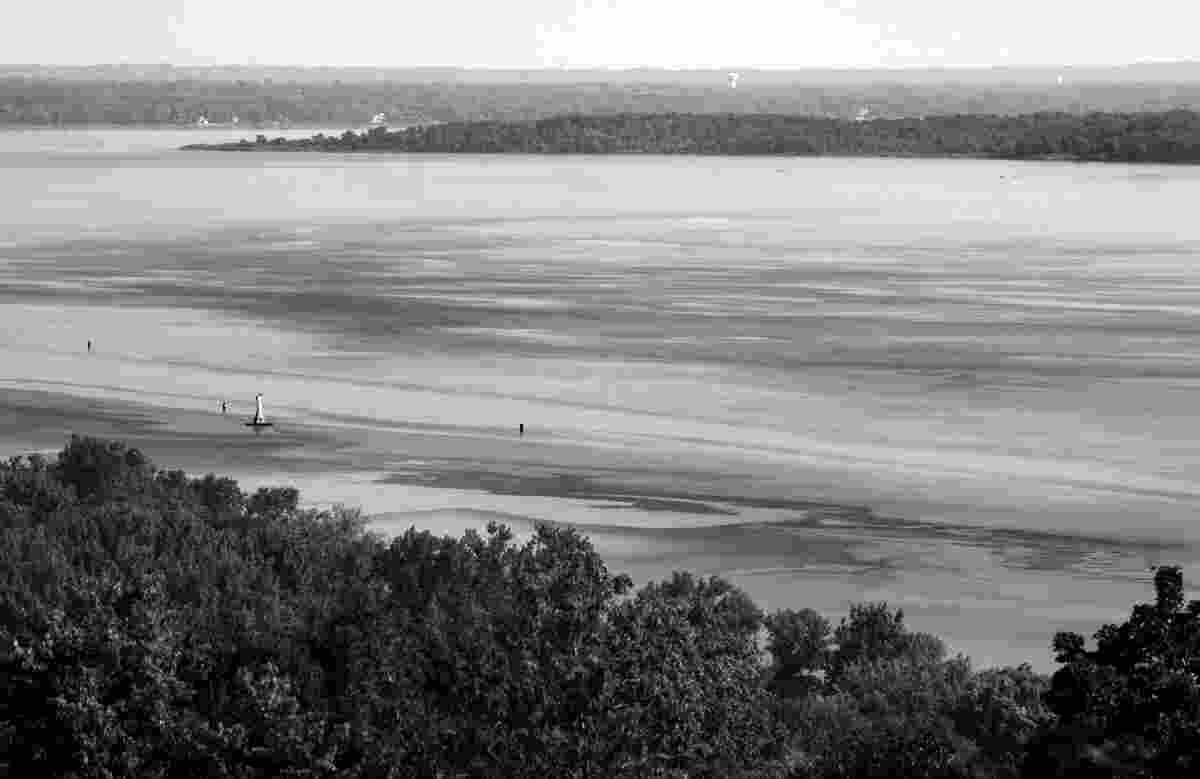
After years of unheeded warnings and spotty regulation, an environmental calamity streaked down the Illinois River in verdant shades of green this summer pushed by currents past the Illinois Valley Yacht and Canoe Club south to the Bob Michel Bridge and beyond.
It was the largest algal bloom in at least 25 years, maybe the largest ever, and was visible for miles. Motor boats, jet skis and barges cut through the green phytoplankton effortlessly. The source is nutrient runoff from farm fields and residential lawns, but the greatest culprit is likely lawns.
While agriculture relies on huge quantities of chemical fertilizers and significant amounts of it run off fields, farmers are acutely sensitive to the ratio of cost to benefit, said Mike Miller, supervisor of environmental and interpretive services at the Peoria Park District. Farmers want to pay only for amounts of fertilizer linked to increased yields, however, homeowners, on the other hand, often are unrestricted by cost in their quest for a perfect, weed-free, manicured lawn.
“The scariest thing is Saturday morning at Lowe’s seeing people loading their carts with lawn chemicals,” Miller said.
The largest contributor to Gulf hypoxia – the dead zone in the Gulf of Mexico — is the Illinois River and Upper Mississippi, he said.
“Between 50 and 80 percent of our oxygen comes from the ocean, and when the ocean crashes, that’s a big wake-up call. What we are doing today will have us gasping for breath in the future,” he said. “We’re killing our future source of oxygen. It takes a lot to pollute and kill the ocean, but that’s what we’re doing.”
Recent estimates put the Gulf dead zone at 6,000 square miles. The region is just one of what the World Resources Institute estimates are 530 ocean dead zones worldwide.
In addition to nutrient runoff, salt used on roadways in winter is contributing to the problem, Miller said.
While destruction of the rainforests is widely recognized as an environmental disaster affecting the entire world, nutrient runoff killing huge stretches of ocean is equally calamitous, Miller said, noting the cosmetic lawn chemical industry has grown significantly in the past two decades and expanding suburbs have added to the growth.
“No one wants to destroy rainforests, but if you over-apply nutrients to your backyard, it’s just as calamitous,” he said. “There’s a huge disconnect between the reality of the problem and the fantasy of a perfect lawn.”
Some states and municipalities have banned cosmetic use of lawn chemicals because of the environmental and health impacts. Connecticut and New York have banned cosmetic lawn chemicals around schools and day care centers. Cayahoga County around Cleveland has banned most pesticides on county property. Takoma Park, Maryland, is one of the first regions to adopt restrictions on both private and public property in the city. Peoria, on the other hand, has no restrictions.
“Get real. It’s your lawn, not Augusta!” said Bob Streitmatter, manager of Luthy Botanical Garden at Glen Oak Park, referring to the chemically-manicured Georgia PGA golf course.
Luthy has eliminated much of the cosmetic lawn chemicals it once used and has instead integrated white clover into its turf.
Streitmatter presented the first in a series of organic lawn care classes at Luthy in September. He plans to continue the series with classes in the spring.
“We don’t know the true cost of these chemicals. We are seeing higher health care costs, higher rates of asthma, larger algae blooms on the river,” he said. “Synthetic lawn chemicals contribute significantly to the problem.”
Krishnanand Maillacheruvu, associate professor of civil engineering and construction at Bradley University, said nitrogen and phosphorous are major contributors to the algal bloom on the river, and heavy rains in the spring exacerbated runoff.
Heading into autumn and shorter daylight, bacteria have begun breaking down the algae, and oxygen levels in the water are going down, he said.
“There is no question, this is contributing to the dead zone (in the Gulf of Mexico),” he said. “We must change what we do on a day-to-day basis. Regulations will help, but change must come from us. Organic lawn care practices will help, absolutely.”
He said increasing awareness of the causes of the problem is critical.
In late September, the U.S. District Court in Eastern Louisiana ordered the U.S. Environmental Protection Agency to decide within 180 days whether it will impose new limits on nutrient pollution causing dangerous algal blooms in the Illinois and Mississippi River basin.
The suit was filed by the Natural Resources Defense Council on behalf of Prairie Rivers Network and other organizations.
“For too long, EPA has stood on the sidelines while our nation’s waters slowly choke on algae,” said Ann Alexander, senior attorney with NRDC. “They have acknowledged the problem for years, but could not muster the gumption to address it.”

1 comment for “Illinois River algal bloom largest in at least quarter century – Consequences: Dire”